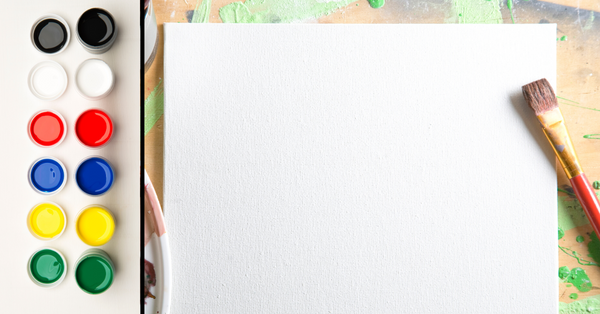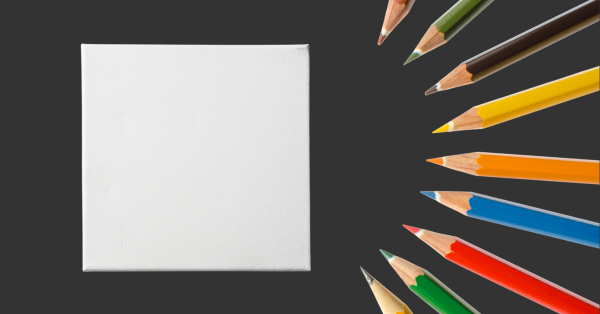
Colored pencils are a great way to add color and texture to your artwork. Plus, colored pencils are easy to use and work especially well for those little details that can be challenging to try and paint.
But can you use colored pencils on canvas?
The answer is yes!
Colored pencils are a great medium to use on canvas. Not only do they provide you with a range of color and texture, they are also a great way to add definition and depth to your work.
Using colored pencils on canvas has many advantages, but it can also be tricky to get the best results. Keep reading to learn some helpful tips for using colored pencils on canvas.
TABLE OF CONTENTS
Pros and Cons of Using Colored Pencils on Canvas
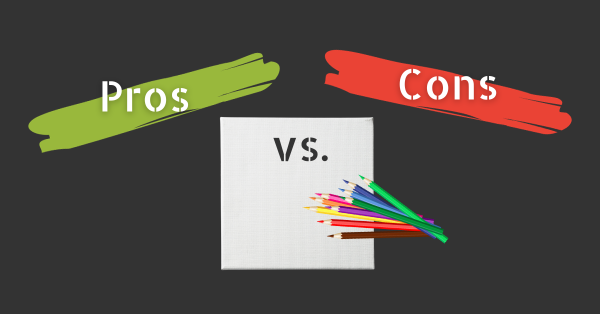
Before we get started on how to use colored pencils on canvas, you’re probably wondering what the pros and cons are of trying this unconventional combination.
To start, colored pencils are inexpensive and easy to use. They come in a variety of colors and shades. Plus, they require less set-up and maintenance time than other mediums like acrylic paint or watercolors.
The biggest advantage of colored pencils is that they can be used to create subtle shading and blending effects. They’re versatile, allowing you to create detailed drawings, abstract art, and more. And with a canvas, you can select a massive surface to work with, making the artistic possibilities endless.
Of course, all mediums have their disadvantages, and colored pencils are no exception. Colored pencils can be difficult to layer, and they don’t blend as easily as other media.
It can be challenging to use colored pencils on canvas, as the texture of the canvas can cause the pencils to skip or smudge. Colored pencils (although erasable) can also be difficult to remove from canvas, and they can leave an unwanted residue.
How to Use Colored Pencils on Canvas
Now that you understand the pros and cons, we’ll go over how to use colored pencils on canvas for best results along with some tricks and tips to help you along the way.
1. Choose and prep your canvas
The type of canvas you use is important when it comes to using colored pencils. And the desired effect you want should impact how you prep and prime your canvas.

If you choose a canvas that has a slightly textured surface, this will give you more control when it comes to shading and blending. The texture of the canvas will show through the art which can have a really cool effect. The colors will also be slightly less saturated, which may or may not be something you’re looking for. If all of this sounds ideal, don’t prep or prime your canvas at all.
On the other hand, if you’re looking for a smooth, high saturation finish, you should start by priming the canvas with several layers of gesso. The more gesso you apply, the more the surface will seem like paper.
You can also start by sanding the surface of the canvas to create an even more smooth surface. This will ensure that your colored pencils glide smoothly and will prevent any smudging.
Canvas board is a great surface for colored pencils because it has a slightly textured surface that allows for easy blending of colors. The textured surface also helps prevent the colors from smudging and fading over time.
Also, canvas boards are durable and long-lasting, which makes them ideal for artwork that will be displayed for a long time.
2. Choose your pencils
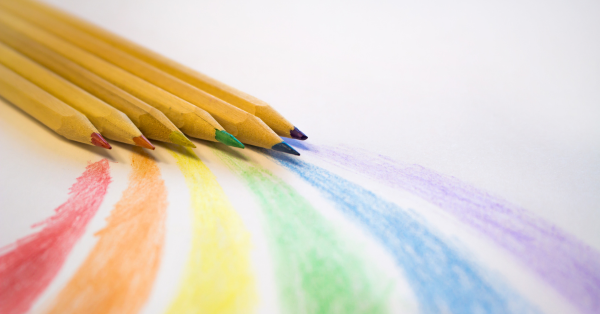
When working with colored pencils, it’s important to use a variety of pencils to get the best results. Try using both hard and soft pencils for different areas of your work. Hard pencils will give you more control when it comes to details and shading, while soft pencils will provide a more blended look.
It’s important to keep in mind that the tooth of your canvas will impact how much pigment you need. So, if your canvas has a rougher texture, you might benefit from using more soft pencils than hard pencils.
Faber-Castell has some incredible options for premium colored pencils. We highly recommend checking them out.
2. Seal your canvas
Once you’ve finished your work, it’s important to seal it to protect the colors and prevent smudging. A fixative will help to keep your work looking its best.
To seal a canvas after using colored pencils, try using a spray sealer. Be sure to use a sealer that is specifically designed for use with colored pencils.
The Krylon UV Archival Varnish Spray is great because it preserves the vibrancy of the coloured pencils really well and gives a really nice sheen to your work. It also dries quickly (within a few hours).
Apply the sealer in even, light strokes at a distance of about 10-12 inches from the canvas. Allow the sealer to dry fully between coats.
12 Tips for Using Colored Pencils on Canvas
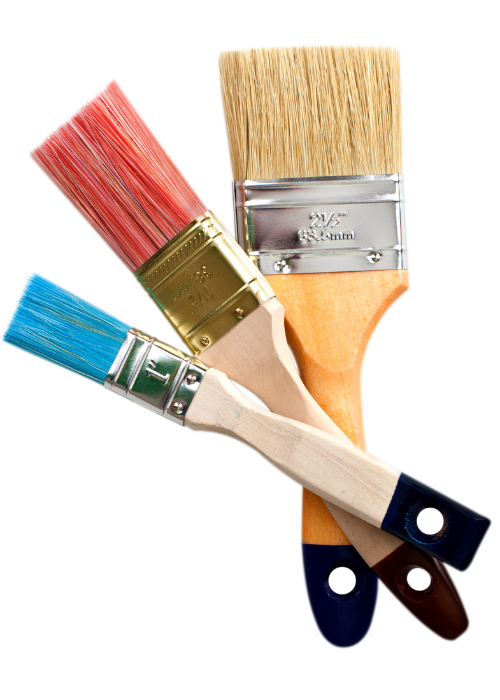
Now that you understand the how and the why behind using colored pencils on canvas, here is a list of tips and tricks to help you create your dream piece.
Begin with a light layer of color before building up to darker shades.
Work with a light hand to avoid pressing too hard, as this can cause the canvas to tear.
Use a blending pencil or tortillon to blend colors together and create smooth transitions.
Layer colors to achieve different shades and hues.
Sharpen your pencils for a fine point.
Make sure to use a canvas that is primed for colored pencils.
Use a fixative spray to help your colors stay in place and prevent smudging.
Experiment with different techniques, such as hatching, cross-hatching, and stippling.
Try adding texture to your work with a sandpaper block or other textured tools.
To add depth, use a combination of light and dark colors.
Use a white or light-colored pencil to add highlights.
Experiment with color combinations to find the perfect palette for your artwork.
Key Takeaway
By following these simple tips, you can use colored pencils on canvas with great results. So don’t be afraid to experiment and get creative! The possibilities with this method are limited only by your imagination.
Frequently Asked Questions
What kind of pencils can you use on canvas?
If you’re looking to create artwork on canvas, there are a variety of pencils that can be used to achieve your desired effect.
Most pencils, including lead, colored, and even mechanical pencils, can be used on canvas but for the best results, it is recommended to use a graphite pencil, charcoal pencil, or pastel pencil.

Graphite pencils come in a range of grades, from soft to hard, which allows you to achieve varying degrees of shading and detail.

Charcoal pencils offer deep, dark lines and shades, while pastel pencils are ideal for creating vibrant colors and delicate lines.
Each type of pencil offers different effects and results, so it’s important to choose the one that best suits your needs.
Additionally, pencils can be combined to create even more unique effects. For example, you can use a graphite pencil to sketch out your outline and then fill in the details with a charcoal pencil.
Experimenting with different techniques and tools is a great way to explore your creative potential and create beautiful artwork on canvas.
How do you blend colored pencils on canvas?
You can blend colored pencils on canvas by lightly layering the colors and using a blending tool to soften the edges. You can also use a colorless blender pencil to help blend different colors together. A soft cloth or paper towel works well to blend the colors.
Experiment with different techniques and tools to find the best way to blend the colors on the canvas.
Some other articles you might like
